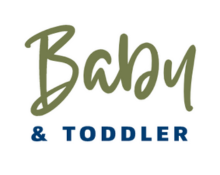
Leaking breasts during breastfeeding is a common occurrence and happens when your breasts produce more milk than your baby needs at that moment. Here are some key points about leaking breasts and how to manage them:
Normal and temporary: Leaking breasts are a normal part of breastfeeding and typically occur in the early postpartum period when your milk supply is being established. As your body adjusts to your baby’s feeding patterns, leaking usually becomes less frequent over time.
Letdown reflex: Leaking is often triggered by the letdown reflex, which is the release of milk from the milk ducts. It can be triggered by your baby’s suckling, hearing your baby cry, or even by your own thoughts or sensations associated with breastfeeding.
Absorbent nursing pads: To manage leaking, you can use nursing pads, which are absorbent pads that you place inside your bra to catch the leaked milk. There are disposable and reusable options available. Change the nursing pads frequently to keep your breasts and nipples clean and dry to prevent any discomfort or potential for infection.
Nursing bra selection: Wearing a supportive and comfortable nursing bra can also help manage leaking. Look for bras that provide good support and have moisture-wicking properties to keep your breasts dry. Some nursing bras also have built-in pockets or pads for extra absorbency.
Manual expression or pumping: If your breasts are feeling particularly full or engorged and you’re experiencing excessive leaking, you can manually express or use a breast pump to remove some milk. This can provide relief and help regulate your milk supply. However, it’s important to find a balance to avoid overstimulating your breasts and potentially causing an oversupply.
Letting gravity help: Leaning forward slightly when you feel a letdown can help reduce the amount of milk that leaks out. You can also gently apply pressure to your breasts with your arms or a towel to help minimize leakage.
Time and adjustment: As your body adjusts to your baby’s feeding patterns and your milk supply regulates, leaking should decrease over time. Your body will become more efficient at producing the right amount of milk for your baby’s needs, and leaking will become less frequent.
Remember, leaking breasts are a normal part of breastfeeding, and most women experience it to some extent. However, if you’re concerned about excessive leaking, experiencing discomfort, or if you have any other breastfeeding concerns, it’s always a good idea to consult with a lactation consultant or healthcare professional for personalized advice and support.
